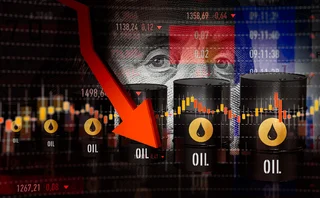US shutdown leaves commodity traders without key data
Commodity traders are ‘flying blind’ without Commitment of Traders reports

The US government shutdown has left commodity traders ‘flying blind’ without the weekly Commitment of Traders (COT) report from the Commodity Futures Trading Commission, says Ole Hansen, head of commodity strategy at Saxo.
“The lack of COT transparency has turned positioning analysis into detective work,” he says in a research note. “Traders are increasingly relying on proxies – changes in the open interest on the individual futures markets, exchange-traded fund flows, options market activity, futures curve shape and visible stock movements – to gauge sentiment.”
The longer the COT blackout persists, the greater the uncertainty will become around how crowded certain trades have become, and this could lead to sharp corrections once the data becomes available again, warns Hansen.
The COT report covers a range of commodities including Brent crude and gasoil. Released every Friday after the US close, the report breaks down the open interest in futures markets into different groups of users depending on the asset class. This enables market participants to follow, for example, the behaviour of managed money accounts, such as hedge funds and commodity trading advisers, which are usually the most reactive participants to price developments. Following speculator positions “provides views about major trends but also helps to decipher when a reversal is looming,” says Hansen.
The deepening contango suggests traders see little near-term relief
Ole Hansen, Saxo
The absence of the reports has created an “unusual vacuum”, he says. “The last report, dated September 23, offered a snapshot that now feels ancient given the major price swings seen across energy, metals and agriculture since then.”
The last time this happened — during the 35-day shutdown from December 2018 to late January 2019 — the COT backlog wasn’t fully caught up until March 8, Hansen notes.
Without the COT data, traders have relied on Ice’s weekly updates for Brent and gasoil to infer speculative trends. “Those show managed money accounts cutting their net long in Brent for a third straight week to roughly 110,000 contracts — the lowest in five months — while gross short positions rose to a 13-month high near 158,000,” says Hansen. “The deepening contango suggests traders see little near-term relief, with the prompt market under pressure from weak refinery margins, rising OPEC+ production and softer seasonal demand.”
Driven by broad risk reduction across the energy sector, the gasoil futures contract – a decent barometer for diesel demand – has in the past two weeks seen its net long slip from a 3½‑year high to 57.1k contracts, Hansen reports.
“If the current shutdown drags on, speculative crowding could become more pronounced, raising the risk of sharp reversals when the data finally returns,” he says. “As the 2019 episode showed, once COT reporting resumes, there is typically a scramble to realign exposures with reality.”
More on Oil & refined products
Energy Risk Europe Leaders’ Network: geopolitical risk
Energy Risk’s European Leaders’ Network had its first meeting in November to discuss the risks posed to energy firms by recent geopolitical developments
Energy Risk at 30: Learning from the past
Energy Risk looks back at the seminal events and developments that have shaped today’s energy markets
Why Iran tensions failed to rattle markets
Despite initial fears, traders say risks were signposted and investors had deleveraged after April
Oil and products house of the year: Macquarie Group
Energy Risk Awards: Bank pioneers innovative deals in illiquid markets, taking on esoteric risk
Podcast: should negative oil prices be allowed?
Did negative oil prices signify the market was operating effectively, or that something was wrong?
Podcast: the future of retail investment in oil
Will negative prices and big losses curb retail investors’ appetite for oil futures over the longer term?
Podcast: Kaminski and Ronn on negative oil and options pricing
The market is gravitating to the Bachelier model as an alternative to Black 76
Negative oil prices put spotlight on investors
What part did Bank of China and other investors play in last month’s oil rout, asks derivatives veteran








